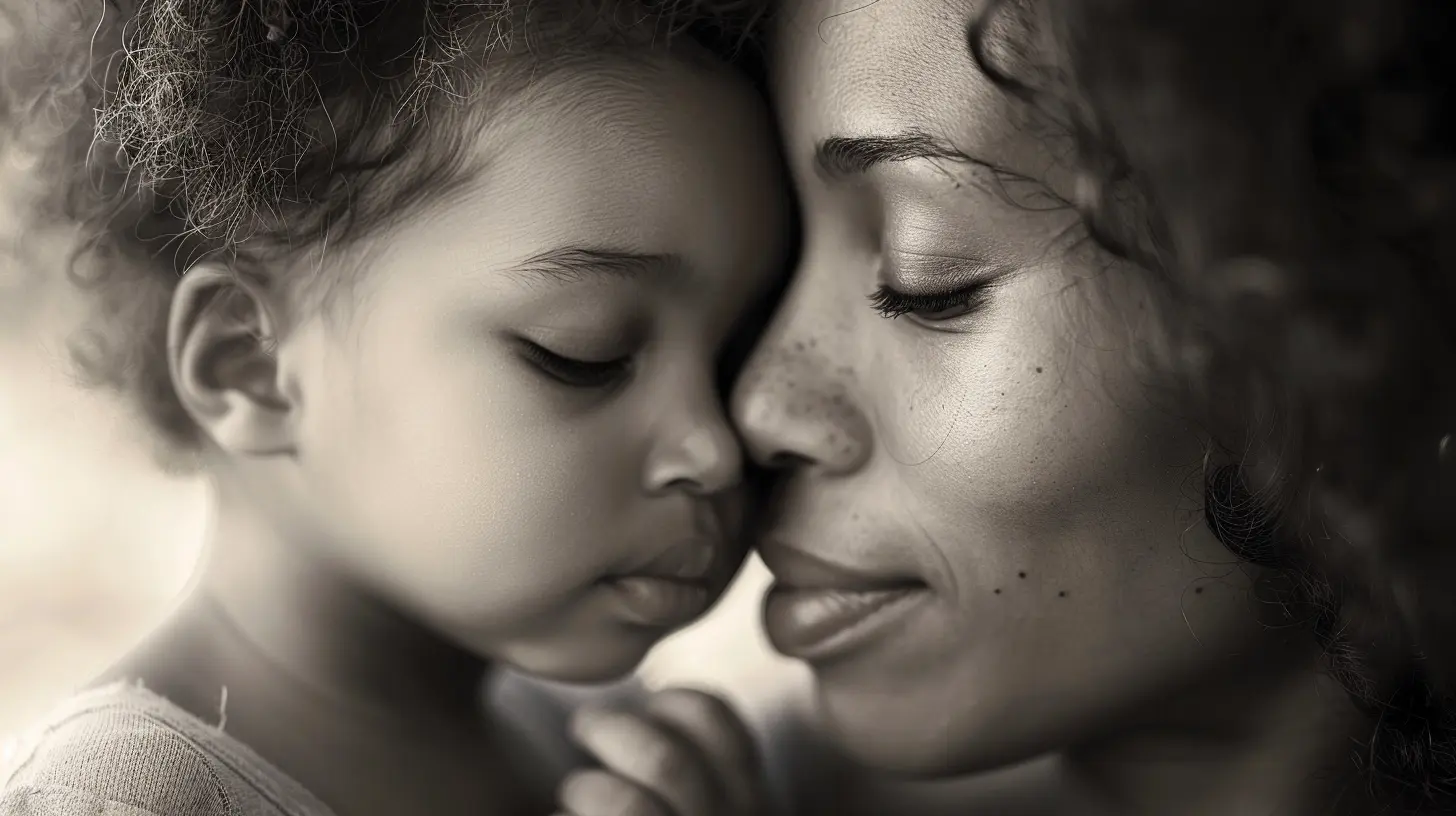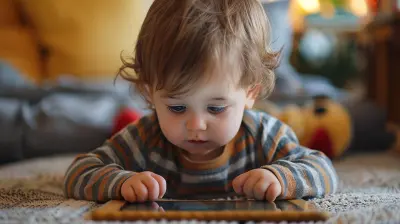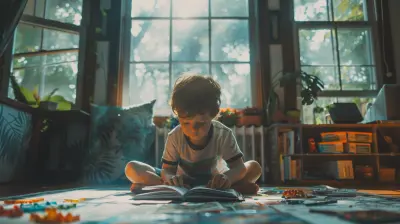The Power of Empathy: Teaching Your Child to Understand Others
11 July 2025
Every parent wants to raise kind, caring, and emotionally intelligent children. In a world that often moves too fast, where screens sometimes take the place of real conversations, teaching your child empathy might just be one of the greatest gifts you can give. Let's be honest—empathy isn’t something you can just hand over like a toy or a snack. It’s something they learn, feel, and grow into, bit by bit, moment by moment.
So, how do we help our little ones understand and truly care about others? That’s exactly what we’re going to talk about.

What Is Empathy, Really?
Empathy is more than just being nice. It’s the ability to feel what someone else is feeling—to put yourself in their shoes and imagine how life looks from their eyes. It’s not just saying, “I’m sorry you’re sad,” but truly getting why they’re upset and offering a shoulder to lean on.There are actually two types of empathy:
- Cognitive empathy – Understanding what someone else is going through.
- Emotional empathy – Feeling what that person is feeling.
When both come together, your child becomes not just a good listener but a genuine comforter—a true friend to others.

Why Empathy Matters More Than Ever
Raise your hand if you've ever thought, “I just want my kid to be a good human.”Empathy is at the heart of kindness, compassion, and emotional strength. Kids who grow up learning empathy are more likely to:
- Build stronger friendships
- Handle conflicts with care
- Show compassion and inclusivity
- Communicate more effectively
- Do better academically and socially
In short, empathy gives them a social and emotional superpower.

When Do Kids Start Learning Empathy?
While empathy might seem like a big concept for tiny humans, it actually starts much earlier than you'd think. Babies as young as a few months old can show concern when others are upset. By toddlerhood, children start mimicking emotional responses—they may hand a toy to a crying friend or pat someone on the back.But here’s the thing: just like walking or talking, empathy isn’t mastered overnight. It’s learned through day-to-day interactions, conversations, and, most importantly, from watching you.

How Parents Can Teach Empathy: Real Tips That Actually Work
Here’s where the rubber meets the road. Teaching empathy doesn't require a parenting degree or magic wand—just intention, patience, and love.1. Model Empathy Daily
Children are expert imitators. If they see you being kind, listening carefully, and showing concern for others, they’ll start doing the same.Let them hear you say things like:
- "That woman looks upset. I hope she's okay."
- "Your brother seems a little frustrated. Let’s ask him what he needs."
Empathy grows from these small seeds of observation.
2. Talk About Feelings—A Lot
The more your child understands emotions, the easier it is for them to recognize those feelings in others.Use real-life moments to name emotions:
- "You’re frustrated because the blocks fell over. That’s okay. It’s hard work building!"
- "He looks sad. Maybe he misses his toy."
Books are amazing for this, too. Stop mid-story and ask, “How do you think she feels right now?” or “What would you do if you were him?”
3. Encourage Perspective-Taking
This is all about helping your child see outside their own bubble.Next time there’s a disagreement:
- Ask, “Why do you think your friend did that?”
- Say, “How would you feel if that happened to you?”
Simple questions like these open the door to deeper understanding.
4. Praise Empathetic Behavior
When your child shows empathy, don’t let it slide by unnoticed. Even a small, “That was really kind of you to help your sister” reinforces the importance of their action.Kids thrive on positive reinforcement. Pointing out empathetic behavior lets them know it’s not only noticed—it’s valued.
5. Offer Opportunities to Practice
Empathy is a skill, and like any skill, it gets better with practice.Get your child involved in acts of kindness:
- Write cards for people in the hospital
- Help out at a community garden
- Carry groceries for a neighbor
- Bake cookies for a friend who’s having a hard time
These real-life moments aren’t just nice gestures—they’re empathy in action.
6. Be Patient When They Miss the Mark
Let’s face it, kids are still learning. There will be times when they act selfish, rude, or dismissive. But instead of jumping to punishment, use it as a teachable moment.Ask:
- “How do you think your words made him feel?”
- “Next time, what could you do differently?”
Empathy isn’t about perfection—it’s the willingness to try again and do better.
Emotional Intelligence and Empathy: Hand in Hand
You're probably hearing a lot about "emotional intelligence" these days—and for good reason. It involves understanding, managing, and expressing emotions in healthy ways. Empathy is a huge pillar of that.When kids learn to identify their own feelings, they’re better equipped to understand others'. It's kind of like learning to swim before you can teach someone else. You’ve got to know how to stay afloat before you can help pull someone else from the deep end.
The Role of Play in Building Empathy
Believe it or not, playtime is empathy’s playground.When kids play pretend (think: superheroes, doctors, or tea parties), they’re stepping into someone else’s world. This imaginative role-playing gives them a taste of other perspectives.
You can even guide them gently:
- “What do you think the baby doll is feeling?”
- “Why is the puppy sad?”
Plus, cooperative games—where kids work as a team—help them learn compromise, patience, and empathy all in one go.
Teaching Empathy in the Age of Screens
Let’s face it: technology isn’t going anywhere. And while it has its perks, it can sometimes create emotional distance.So, how do we balance screen time and empathy?
- Limit passive consumption: Replace mindless scrolling with shows that model empathy and emotional awareness.
- Watch together: Pause during emotional scenes and ask, “What would you do if that were your friend?”
- Encourage digital kindness: Talk about online tone, how comments can hurt, and the importance of standing up for others online.
Even in the digital world, empathy has a place.
Empathy Grows When Kids Feel Seen
One thing that often gets overlooked? Kids can’t give what they’ve never received. If we want them to show empathy, they have to feel empathy too.That means:
- Listening when they talk (even about Minecraft or that YouTube video)
- Taking their feelings seriously
- Validating their emotions, rather than brushing them off
When they feel understood, they’re more likely to understand others.
What If Your Child Struggles With Empathy?
Some kids are naturally in tune with others. Others may need a little more guidance—and that’s okay. Every child is different.If your child seems cold or detached from others’ feelings, don’t panic. It doesn’t mean they’re unkind—it may just mean they’re overwhelmed, confused, or not developmentally ready yet.
In those cases:
- Keep modeling empathy
- Be consistent with emotional language
- Use visual aids (like emotion charts)
- Read books and tell stories with clear emotional cues
Sometimes it just takes the right connection at the right time to spark understanding.
The Long-Term Payoff of Teaching Empathy
Imagine your child as they grow up—They’re the one who notices someone sitting alone at lunch.
They’re the friend who listens without trying to “fix” everything.
They’re the team member who calms a group when conflict arises.
That’s empathy. And it doesn’t just matter in school or playgrounds or online chats. It matters in marriages, workplaces, communities—everywhere.
Final Thoughts: A Kinder Future Starts at Home
Raising an empathetic child isn’t about grand gestures; it’s about the little moments. The bedtime chats, the stories you share, the way you talk about feelings after a tough day. Bit by bit, these build the foundation for a more compassionate human being.So when your child soothes a crying sibling, offers a friend their last cookie, or even just listens to someone who’s having a rough time—know that you’re doing something right.
The world needs more empathy. And it starts with how we raise our children today.
all images in this post were generated using AI tools
Category:
Emotional DevelopmentAuthor:

Maya Underwood
Discussion
rate this article
2 comments
Maxine Bailey
Thank you for sharing this insightful article on empathy! Teaching our children to understand and connect with others is invaluable for their development. I appreciate the practical tips you provided, which will surely help parents nurture compassion in their kids. Great read!
November 28, 2025 at 4:28 AM

Maya Underwood
Thank you for your kind words! I'm glad you found the article helpful for fostering empathy in children.
Carly Hines
How can we nurture empathy in everyday life?
July 18, 2025 at 2:23 PM

Maya Underwood
Encourage open conversations about feelings, model empathetic behavior, and engage in community service together to foster understanding and compassion in everyday life.


